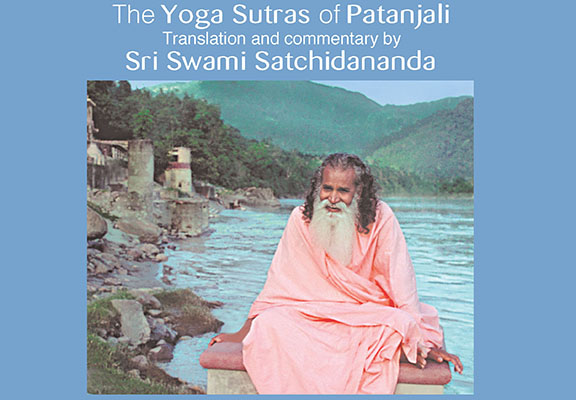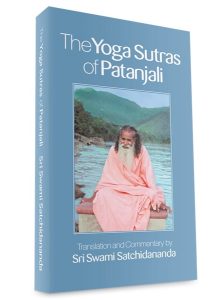 When the word Yoga is mentioned, most people immediately think of some physical postures for relaxing and limbering up the body. This is one aspect of the Yogic science, but actually only a very small part and relatively recent in development. The physical Yoga, or Hatha Yoga, was primarily designed to facilitate the real practice of Yoga—namely, the understanding and complete mastery over the mind. So the actual meaning of Yoga is the science of the mind.
When the word Yoga is mentioned, most people immediately think of some physical postures for relaxing and limbering up the body. This is one aspect of the Yogic science, but actually only a very small part and relatively recent in development. The physical Yoga, or Hatha Yoga, was primarily designed to facilitate the real practice of Yoga—namely, the understanding and complete mastery over the mind. So the actual meaning of Yoga is the science of the mind.
Traditionally, the word Yoga by itself refers to Raja Yoga, the mental science. With the current burgeoning of interest in expanding consciousness and in mental science in general, it is natural that we turn to the ancient science of Raja Yoga. There are, of course, many Western approaches to the study and control of mind, each advancing various different concepts and techniques. But compared to these, the ancient Yogic science is a great grandsire. For thousands of years the Yogis have probed the mysteries of the mind and consciousness.
Integral Yoga is not in any way different from Raja Yoga. Raja Yoga itself is an integral approach. It does not simply advocate meditation, but takes into consideration the entire life of a person. Its philosophy is scientific. It welcomes and in fact demands experimental verification by the student. Its ultimate aim is to bring about a thorough transformation of the individual who practices it sincerely. Its goal is nothing less than the total transformation of a seemingly limited physical, mental and emotional person into a fully illumined, thoroughly harmonized and perfected being—from an individual with likes and dislikes, pains and pleasures, successes and failures, to a sage of permanent peace, joy and selfless dedication to the entire creation.
The primary text of Raja Yoga is the Yoga Sutras of Patanjali. The Yoga Sutras comprise the first and foremost scripture of Yoga and within these 200 short sutras, the entire science of Yoga is delineated.
Book 1, Sutra 2: Yogas chitta vritti nirodhah.
“The restraint of the modifications of the mind-stuff is Yoga.”
In this sutra, Patanjali gives the goal of Yoga. For a keen student this one sutra would be enough because the rest of them only explain this one. If the restraint of the mental modifications is achieved one has reached the goal of Yoga. The entire science of Yoga is based on this. Patanjali has given the definition of Yoga and at the same time the practice. If you can control the rising of the mind into ripples, you will experience Yoga. The extraordinary experience gained by controlling the modifications of the mind is itself called Yoga.
All the differences in the outside world are the outcome of your mental modifications. The entire outside world is based on your thoughts and mental attitude. The entire world is your own projection. That is why Yoga does not bother much about changing the outside world. There is a Sanskrit saying, “Mana eva manushyanam karanam bandha mokshayoho.” “As the mind, so the man; bondage or liberation are in your own mind.” If you feel bound, you are bound. If you feel liberated, you are liberated. Things outside neither bind nor liberate you; only your attitude toward them does that.
So, if you can have control over the thought forms and change them as you want, you are not bound by the outside world. There’s nothing wrong with the world. You can make it a heaven or a hell according to your approach. That is why the entire Yoga is based on chitta vritti nirodhah. If you control your mind, you have controlled everything. Then there is nothing in this world to bind you.
Book 1, Sutra 3: Tada drashtuh svarupe’vasthanam.
“Then the Seer [Self] abides in Its own nature.”
You are that true Seer. You are not the body nor the mind. You are the Knower or Seer. You always see your mind and body acting in front of you. You know that the mind creates thoughts; it distinguishes and desires. The Seer knows that but is not involved in it. But to understand that eternal peaceful You, the mind must be quiet. When the mind ceases to create thought forms or when the chittam is completely free from vrittis, it becomes as clear as a still lake and you see your true Self.
And, according to the Yogic scientists like Patanjali—and even many modern scientists—behind the different forms of energy is one unchanging consciousness or spirit or Self. That is why, if we could calm our minds and get to the basis of all these modifications, we would find the unity among everything. That is the real Yogic life. Behind all these differences, in the Self, we never differ. That means behind all these ever-changing phenomena is a never-changing One. That One appears to change due to our mental modifications. So, by changing your mind you change everything.
The entire four books of the Yoga Sutras are the explanations of these two sutras. Chitta vritti nirodhah is the practice. Svarupe’ vasthanam is the experience. You just rest in your own true nature. You have played your games, you have gotten all your experiences, and now you are resting. By resting, Patanjali means that the true you is resting while your body and mind function.
It’s not that your body and mind necessarily rest always. They have to continue to fulfill the jobs for which they were created. In one sense, you are the witness; in another, you are the actor. It depends on where you put yourself. In reality, you are the witness, but if you miss the reality, you are the actor. When you become the actor, you are responsible for your actions. When you are the witness you are not responsible for your actions because you are not acting. So, either act and be responsible, or allow the mind and body to act and be a witness, totally free.
Normally, Yogis do actions only for the sake of others. They are not affected by them because they are not doing anything for their own sake. Whatever the outcome it goes to somebody else. Karma Yoga—selfless service without personal expectation—is done by the mind. In fact, it is the mind that does all Yoga practice, not the real you. That’s why we rarely even talk about the true you. You can leave the real you alone. It is the image-you or the ego-you that needs Yoga. It is to the ego that the teaching is given. If you want to be quiet and happy, perform actions for others’ sake. No scripture is necessary for the true Self. The entire practice is for the ego or lower self, the individual self.
So, let the lower self or ego or chittam free itself from its egoistic activity. Then, it can also rest in peace, reflecting the Self. The mind need not always be functioning; and even if it is functioning, it can function peacefully and joyfully. Then it won’t be a burden for the mind to function. When a Yogi performs something, he or she enjoys it. It’s a play—a game—to act. Scriptures talking of the Self are just for the sake of our intellectual understanding. But the practical truth for the ego is very simple. Just learn to be selfless. Learn to lead a dedicated life. Whatever you do, do it for others. The dedicated ever enjoy peace.
In conclusion, it is my sincere wish and prayer that each one of you experience the peace and joy of Yoga through the help and grace of the great Yoga adept Patanjali Maharishi and that you all attain the supreme achievement to which his Yoga Sutras point. May you go beyond mere book knowledge and attain realization through purity of heart in your very lives.
OM Shanthi, Shanthi, Shanthi. OM Tat Sat.
—-
 Source: Excerpted from The Yoga Sutras of Patanjali: Translation and Commentary by Sri Swami Satchidananda. For those who would also like to hear the sutras chanted, as well as listen to the audiobook of Swami Satchidananda’s landmark book, it is available on CD and digital download.
Source: Excerpted from The Yoga Sutras of Patanjali: Translation and Commentary by Sri Swami Satchidananda. For those who would also like to hear the sutras chanted, as well as listen to the audiobook of Swami Satchidananda’s landmark book, it is available on CD and digital download.

